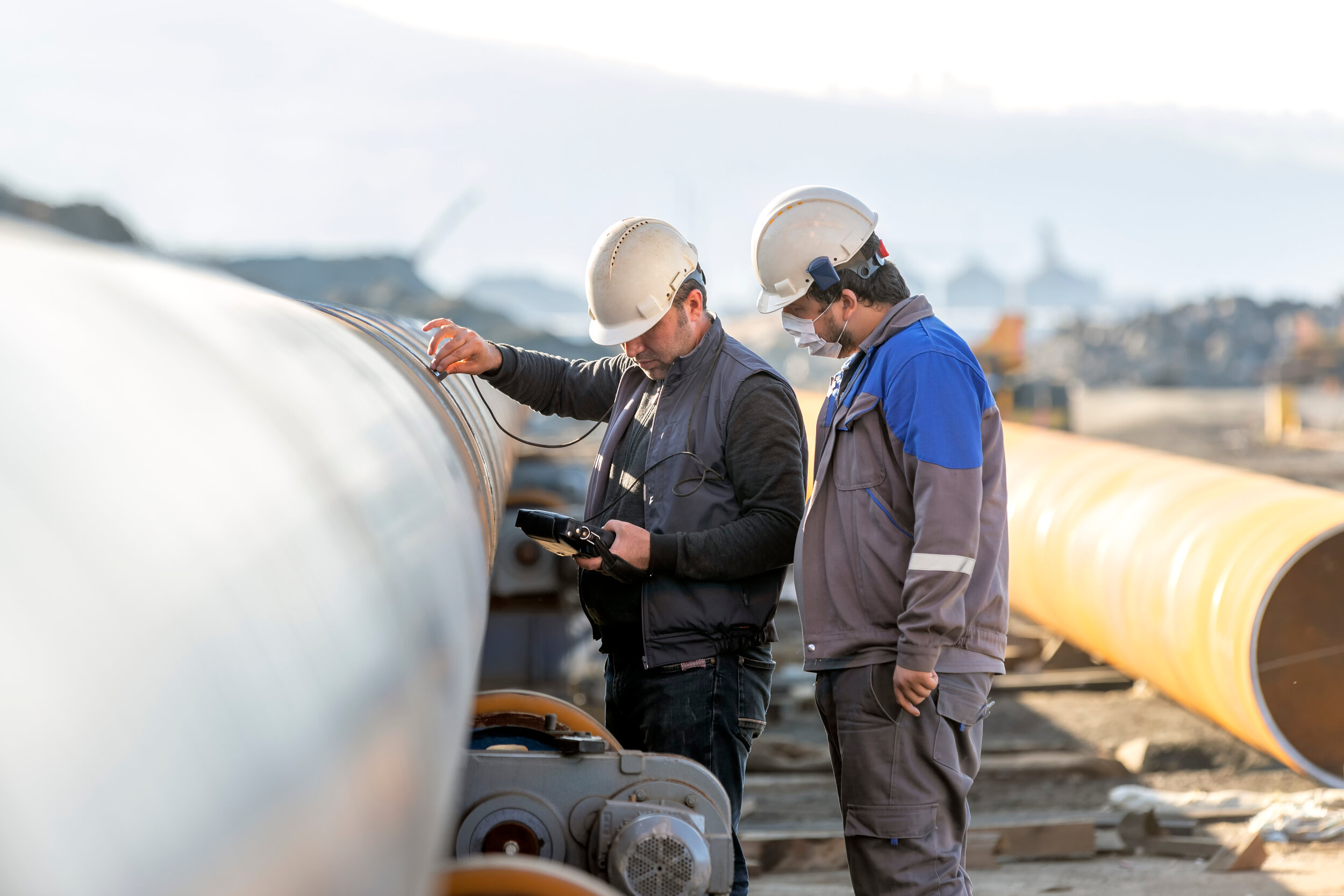Simplify Your Job: Reputable Pipeline Welding Inspection Professionals at Your Service
Simplify Your Job: Reputable Pipeline Welding Inspection Professionals at Your Service
Blog Article
Comprehensive Summary of Pipeline Welding Assessment Procedures
Pipe welding evaluation procedures play an important function in guaranteeing that welded links meet rigorous industry criteria and specifications. From thorough pre-welding evaluations to detailed post-weld assessments, a distinct evaluation process is important for keeping the structural sturdiness of pipelines.
Pre-welding Examination Preparations
Before beginning the welding procedure, detailed pre-welding assessment preparations are essential to make sure the honesty and high quality of the weld joint. These prep work entail a meticulous exam of the materials to be bonded, the welding equipment, and the job atmosphere. By conducting detailed pre-welding examination prep work, potential concerns can be identified and solved early on, leading to reputable and premium weld joints.
Welding Treatment Certification
Detailed pre-welding assessment preparations lay the foundation for the essential procedure of Welding Procedure Qualification, guaranteeing the honesty and top quality of the weld joint. Welding Procedure Certification (WPQ) is an essential action in the welding process that includes testing and certifying welding treatments to guarantee they satisfy certain requirements and needs. The WPQ process usually includes welding procedure spec growth, welding treatment qualification screening, and documents of the outcomes.
Throughout welding procedure requirements development, vital information such as the welding procedure, welding materials, joint layout, and welding specifications are specified to create a comprehensive treatment. Consequently, welding procedure credentials testing is performed to validate the suggested treatment's integrity. This screening usually involves welding test promo codes that go through numerous mechanical and non-destructive examinations to examine the weld's high quality and adherence to the specified standards.
In-process Weld Evaluation
Throughout the welding process, in-process weld assessment plays a crucial function in making certain the high quality and integrity of the weld joint - Pipeline Welding Inspection. This type of inspection involves monitoring the welding parameters, examining the weld grain development, and identifying any possible flaws or stoppages as they take place. By conducting in-process weld assessments, welding drivers can quickly address any type of problems that might emerge, consequently making sure and preventing additional issues that the final weld satisfies the required specs
Common methods used for in-process weld examination consist of visual inspection, liquid penetrant screening, magnetic particle testing, ultrasonic screening, and radiographic testing. Overall, in-process weld evaluation is vital for maintaining the quality and integrity of welded pipes.
Non-destructive Screening (NDT)
Non-destructive Testing (NDT) is a critical method utilized in pipeline welding inspection to assess the stability of weld joints without causing damage to the welded framework. By utilizing numerous NDT strategies, assessors can review the top quality of welds and identify any type of flaws or interruptions that may jeopardize the structural stability of the pipeline. Usual NDT methods used in pipe welding assessment consist of Radiographic Testing (RT), Ultrasonic Screening (UT), Magnetic Fragment Testing (MPT), Fluid Penetrant Screening (LPT), and Visual Testing (VT)
RT involves using X-rays or gamma rays to create pictures of the inner framework of the weld, allowing examiners to detect problems such as porosity, cracks, or insufficient blend. UT uses high-frequency audio waves to spot imperfections underneath the surface area of the weld, providing in-depth information about the size and area of defects. MPT and LPT are made use of to determine surface-breaking problems by using magnetic bits or penetrant liquids to the weld location. Additionally, VT includes aesthetic assessment of welds to determine any type of noticeable flaws.
Post-weld Inspection and Paperwork


Documents of post-weld examination searchings for is important for keeping quality assurance records and making sure compliance with market standards and laws. Thorough records ought to consist of details regarding the inspection approaches used, the area and nature of any kind of defects found, and any kind of corrective activities taken - Pipeline Welding Inspection. Correct documentation not only functions as a document of the weld's high quality however additionally help in future maintenance and evaluation procedures
Conclusion

In read the article final thought, pipeline welding assessment treatments play an essential duty in ensuring the quality and honesty of welds. In general, adherence to correct assessment methods is crucial to the success of pipeline welding jobs.
From precise pre-welding assessments to extensive post-weld analyses, a well-defined inspection process is essential for maintaining the structural strength of pipelines. By performing in-process weld assessments, welding operators can quickly deal with any issues that may occur, therefore avoiding more issues and making sure that the last weld meets the needed requirements.
Common methods made use of for in-process weld evaluation include visual examination, fluid penetrant screening, magnetic particle testing, ultrasonic testing, and radiographic testing.Non-destructive Testing (NDT) is an important technique utilized in pipe welding evaluation to analyze the integrity of weld joints without causing damages to the welded structure. Post-weld assessment involves various approaches to evaluate the welds for issues, including visual assessment, dye penetrant testing, magnetic fragment screening, ultrasonic screening, and radiographic testing.
Report this page